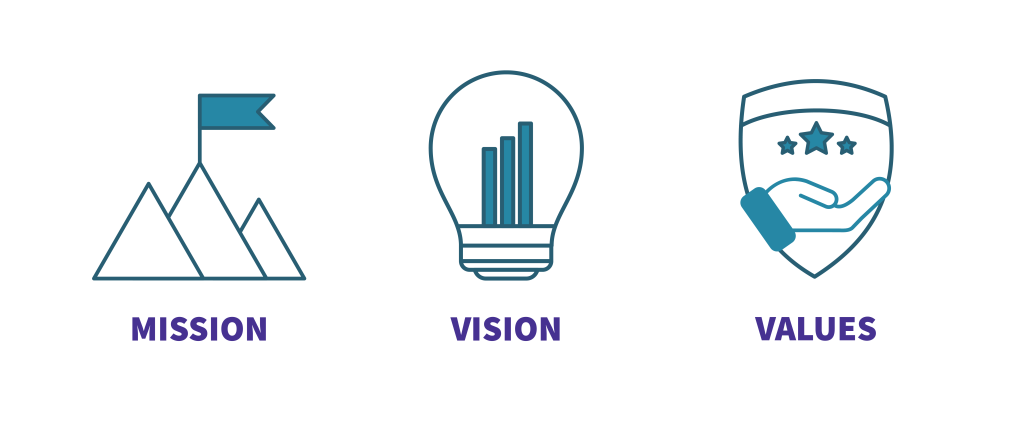1.2 Agency Mission, Vision and Values

When asked to create a recreation-based program for an agency, organization or business, it may be difficult for the novice program-planner to know where to begin. A great place to start is with the agency’s stated Mission, Vision and Values. These will provide insight into the agency’s identity and what they are all about. It is important to note that not every organization has a Mission statement, a Vision Statement, or articulated Core Values. Some organizations, especially those in the non-profit or charitable sectors, have all three. Some have just a Mission, others just Core Values. Every organization is different!
The team-building day you design for a group of executives from the Ivey Academy whose Mission states, “We develop leaders who think globally, act strategically, and address critical issues facing organizations and society, through impactful research and transformative learning experiences” (Ivey Business School, n.d., para. 3) is going to be vastly different from the team-building day you design for a group of counsellors at the Regional HIV/AIDS Committee, whose Mission states, “We are community-inspired and dedicated to positively impacting the lives of individuals and diverse communities living with, at-risk for or affected by HIV/AIDS and Hepatitis C.” (Regional HIV/AIDS Connection, 2024, para. 1).
| Terms to Learn | ||
|---|---|---|
| A Mission Statement conveys an organization’s philosophy or purpose - what they stand for, how they serve their stakeholders, and sometimes even their “why” - in a concise phrase or a few short sentences. The Mission captures the essence of an organization in the present moment. | A Vision Statement is a short statement - usually no more than a sentence or two - that conveys an organization’s hopes for the future. A well-crafted Vision Statement serves as a guide or pathway to inspire and motivate the employees to work toward the organization's greater goals. | Values, aka “Core Values” are the essential, ‘root’ beliefs that anchor an organization and set it apart from others. They are the philosophical and principle perspectives that guide the behaviour of an organization's employees, and the manner in which the organization interacts with others. |
| Example Mission Statements: | Example Vision Statements: | Example Core Values: |
| “Provide pathways to success, an exceptional learning experience and a global outlook to meet student and employer needs”. Fanshawe College, London, ON (2024) |
“Unlocking potential” Fanshawe College, London, ON (2024) |
Integrity, Passion for Excellence, Collaboration, Flexibility, Empathy (Verve Retirement Living, 2024) |
| “To be a catalyst for girls empowering girls” Girl Guides of Canada (2024) |
“A better world, by girls” Girl Guides of Canada (2024) |
Caring, Respect, Honesty, Responsibility, Inclusiveness (YMCA of Southwestern Ontario, 2024) |
| “To empower young people and communities worldwide to build a just, sustainable, equitable and inclusive world, where every person can thrive in body, mind and spirit”. (YMCA of Southwestern Ontario, 2024) |
“To create ‘Resident-Centric’ environments where our seniors are inspired to experience fulfillment – whatever that means to them”. (Verve Retirement Living, 2024) |
"Focus on students, involve our communities, utilize resources wisely, embrace change, engage each other” Fanshawe College, London, ON (2024) |
In parks, recreation or leisure-based organizations, a well-defined Mission, a focused Vision, and well-articulated Values can be the jumping-off point for programmers as they begin considering how or what to program. Embedded in an organization’s Mission, Vision and Values statements are its key hopes and dreams, the organization’s mandate (why it exists in the first place), and its philosophy pertaining to how it serves its clients, constituents and stakeholders.
The job of the program-planner is to keep these ideals front and center when making programmatic decisions for a new event or program. Doing so will preserve the integrity of the programming process, and ensure that the resulting program or event is nicely aligned and congruent with the organization’s deeply held values.

